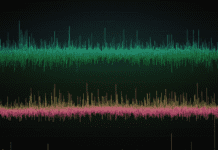Leukemia
Leukemia is a group of blood and bone marrow cancers, most often occurring in the white blood cells.
It is broken down into types by how quickly cancer develops (acute or chronic) and in which type of white blood cell cancer originates (in lymphocytes or myelocytes).
Acute leukemias are the most common cancer among children and teens, accounting for almost 30 percent of childhood/teenage cancers, whereas chronic leukemias often appear in adults.
CANCER FORMATION
Leukemia starts in the bone marrow where several types of blood cells are made, including red blood cells that transfer oxygen throughout the body and white blood cells that fight infections.
In healthy persons, new blood cells are constantly being made in the bone marrow, the majority of which are red blood cells.
During leukemia, the bone marrow produces too many abnormal white blood cells that do not function properly.
This hinders the patient’s immune system, leaving them unprotected and unable to fight off diseases effectively.
So many abnormal white blood cells are made that they crowd out other blood cells, preventing enough red blood cells from being made to supply adequate oxygen to the body.
The abnormal white blood cells can travel throughout the body and collect in organs, causing organ damage.
TYPES OF LEUKEMIA
Leukemias are classified by how quickly the disease develops, fast-growing (acute) or slow-growing (chronic), and what subtype of white blood cell cancer occurs in lymphocytes or myelocytes.
Although there are many types of leukemia, there are four major types.
Acute Lymphocytic Leukemia (ALL)
ALL is the most prevalent childhood leukemia, accounting for 75 percent of all childhood leukemia patients; however, ALL can also occur in adults.
It is most usual in young children, peaking in frequency between 2 to 4 years of age. In ALL, a high number of immature white blood cells, called lymphocytes, are made and crowd out normal lymphocytes.
The immature lymphocytes survive better than normal lymphocytes, which causes them to build up in the lymph nodes, liver, and spleen.
Acute leukemias progress rapidly, so treatment usually begins quickly after diagnosis.
Acute Myeloid Leukemia (AML)
AML is the second most common childhood cancer and the most common acute leukemia in adults.
Similar to ALL, too many immature immune cells (in this case myelocytes) are made, which crowds out normal myelocytes.
This lowers the number of healthy blood cells produced from myelocytes, including red blood cells, platelets, and other white blood cells.
The immature myelocytes can spread to the lymph nodes, liver, spleen, brain, and spinal cord.
Chronic Lymphocytic Leukemia (CLL)
CLL is the most frequent type of leukemia in adults and is rare in children.
Like ALL, too many immature lymphocytes are made, but they appear fairly normal because they are partly mature, making CLL generally less severe than acute leukemias.
However, the partially mature lymphocytes don’t fight off infection as well as fully mature lymphocytes.
The partially mature lymphocytes can accumulate slowly and take years for them to escalate to other regions of the body, such as the lymph nodes, liver, and spleen.
People with CLL may be asymptomatic or have symptoms that go unnoticed for years before they are diagnosed.
However, some subtypes of CLL grow faster while others grow more slowly. Chronic leukemias tend to be more difficult to cure than acute leukemias.
Chronic Myeloid Leukemia (CML)
CML is mostly seen in adults and is rare in children. CML happens when a genetic change in immature myelocytes causes an abnormal gene, called BCR-ABL, to be expressed, which turns immature myelocytes into partially mature myelocytes, called CML cells.
CML cells can build up in the bone marrow and spread to other places in the body, such as the spleen, over time.
Like CLL, CML may take years for symptoms to appear and require treatment.
CML is generally slow-growing but can transition to faster-growing acute leukemia that is difficult to treat.
CAUSE AND RISK FACTORS
The exact cause of leukemia remains elusive, but scientists believe a combination of genetics and environmental factors contribute to disease development.
An individual has an increased risk of developing childhood leukemia if they have a family history of leukemia; certain inherited disorders, such as Down syndrome and immune system problems; and a suppressed immune system, such as for an organ transplant.
Certain leukemias are associated with smoking tobacco and exposure to radiation and certain chemicals.
Unfortunately, some chemotherapies used to treat other types of cancer may actually cause leukemia.
SYMPTOMS
In the beginning, leukemia doesn’t cause obvious symptoms.
Once symptoms do appear, there are some common symptoms across the multiple types of leukemia:
- Persistent fatigue and weakness, usually caused by anemia (low red blood cell count)
- Fever chills, or feeling cold
- Feeling out of breath
- Headaches, feeling dizzy or lightheaded, abnormal vision, or seizures
- Unhealthy looking pale skin called pallor
- Frequent or severe infections, such as bronchitis
- Swollen lymph nodes, often in the throat, armpits, and groin
- An enlarged liver or spleen, causing discomfort under the lower left ribs
- Easy bleeding or bruising, including recurrent nosebleeds, gum bleeding, or blood in the stool or urine
- Small red spots on your skin, known as petechiae, caused by tiny blood vessels rupturing
- Bone or joint pain or tenderness
- Unintentional weight loss, lack of appetite, and swollen stomach
- Excessive sweating, especially at night
- Very high white blood cell counts, which may also cause vision problems, ringing in the ears (tinnitus), changes in mental status, stroke, and prolonged erections
Leukemia symptoms are often not specific and may resemble symptoms of the flu and other common diseases.
You should consult with your doctor if you have any persistent symptoms or symptoms that worry you.
DIAGNOSIS
Before symptoms appear, a doctor may suspect chronic leukemia from abnormal results shown in a routine physical exam or blood test.
After symptoms appear, there are a variety of tests to confirm a leukemia diagnosis.
- Physical exam: Physical signs of leukemia, such as fatigue, pale skin, significant bruising or bleeding, swollen gums, swollen lymph nodes, and an enlarged liver and spleen, can be assessed.
- Blood test: Abnormal levels of red and white blood cells or platelets can be detected in a blood sample taken from the patient’s vein. Leukemia patients tend to have too many white blood cells and not enough red blood cells.
- Blood smear: A small blood sample taken from the patient’s finger is smeared across a glass microscope slide. The blood smear is viewed under a microscope in a laboratory, where abnormal-looking blood cells can be seen and abnormal blood cell numbers can be measured.
- Bone marrow aspiration and biopsy: A leukemia diagnosis is confirmed by looking at the blood cells in the bone marrow. After either numbing the area or going under anesthesia, a bone marrow sample can be obtained from the backside of the patient’s pelvis using a long, thin needle. The sample is analyzed in a laboratory to look for abnormal leukemia cells and chromosomal changes in the leukemia cells and bone marrow. These cells could be tested further to reveal which type of leukemia the patient has.
- Lumbar puncture (spinal tap): A spinal tap can determine if leukemia has spread to other parts of the body. Similar to a bone marrow aspiration, a sample of the fluid around your spine and brain, called the cerebrospinal fluid (CSF), is taken from between two vertebrae in the patient’s lower back. The CSF sample is analyzed in a laboratory to detect leukemia cells.
TREATMENT
Before leukemia treatment can start, any other bleeding disorders or infections need to be addressed first through blood transfusions or antibiotics.
Treatments are patient-specific and vary greatly based on the type of leukemia, the patient’s age, the patient’s overall health, and whether leukemia has spread to other parts of the patient’s body.
Common treatment options include:
- Chemotherapy: As the main treatment for leukemia, chemotherapy is usually tried first. Chemical-based drugs are given via pills, blood infusions, or direct injection into the CSF. There are many types of medicaments used and, depending on the type of leukemia, the patient may receive either one drug or a combination of drugs. Chemotherapy may also be used to prepare the patient’s body before a stem cell transplant.
- Targeted therapy: Drugs that specifically target cancer cells can be used to selectively kill the leukemia cells while sparing the patient’s normal healthy cells, which can reduce the negative side effects of chemotherapy.
- Biological therapy (immunotherapy): Biological-based drugs, such as antibodies, can be used to train your immune system to recognize and attack the cancer cells but spare the patient’s own cells. Recently, new immunotherapies, such as chimeric antigen receptor T cell (CAR-T cell) therapy, have been approved for ALL. CAR-T therapy removes some of the patient’s own immune cells (T cells) and engineers them to recognize and destroy leukemia cells. However, because this type of therapy is so new and there can be severe side effects, only certain certified hospitals can perform this treatment.
- Radiation therapy: During external radiation therapy, the patient is exposed to high-energy ionizing radiation beams, such as x-rays, which kill cancer cells and prevent their growth. The patient lies on a table as a large machine moves around them, directing the radiation to either one specific area of the body or to the whole body, depending on where the leukemia cells are. This therapy treats and helps prevent the spread of leukemia to other parts of the body. Radiation therapy can be used before a stem cell transplant to prepare the patient’s immune system.
- Stem cell transplant (bone marrow transplant): Depending on the severity of leukemia, a doctor may decide it is best to replace the patient’s diseased bone marrow with healthy bone marrow. Prior to treatment, the patient’s diseased bone marrow must be destroyed using chemotherapy and radiation. Healthy blood-forming stem cells are infused back into the patient intravenously to restore the patient’s bone marrow and immune system. If the healthy stem cells are taken from bone marrow, the procedure is called a bone marrow transplant. The healthy cells are usually from a tissue-matched donor but can be a patient’s own stem cells in certain cases. Patients are given medication to prevent life-threatening side effects, such as graft-versus-host disease and rejection of the donor stem cells. Although stem cell transplants are expensive and involve risk, they offer the greatest chance for long-term remission, especially for ALL and AML.
Surgery is rarely used to treat leukemia. Multiple rounds or types of therapy may be needed to completely get rid of cancer or to treat recurring cancers.
SURVIVAL RATES AND OUTLOOK
Because of increased research and innovation for leukemia treatments, such as targeted therapies, the survival rates have risen seriously over the past few decades.
The five-year survival rate after diagnosis varies for each type of leukemia.
The survival rate is greater than 85 percent for ALL, around 70 percent for AML, almost 70 percent for CML (having doubled in the past 25 years alone), and 83 percent for CLL.
Resources
Websites
“CAR T Cells: Engineering Patients’ Immune Cells to Treat Their Cancers.” NIH National Cancer Institute. https://www.cancer.gov/about-cancer/treatment/research/car-t-cells (accessed December 16, 2018).
“Leukemia.” American Cancer Society. https://www.cancer.org/cancer/leukemia.html (accessed December 13, 2018).
“Leukemia.” Leukemia & Lymphoma Society. https://www.lls.org/leukemia (accessed December 13, 2018).
“Leukemia.” Mayo Clinic. https://www.mayoclinic.org/diseases-conditions/leukemia/symptoms-causes/syc-20374373 (accessed December 13, 2018).
“Leukemia in Children.” St. Jude Children’s Research Hospital. https://www.stjude.org/disease/leukemia.html (accessed December 13, 2018).
“Leukemia—Chronic Lymphocytic—CLL: Statistics.” Cancer.net. https://www.cancer.net/cancer-types/leukemia-chronic-lymphocytic-cll/statistics (accessed December 16, 2018).
“Leukemia—Chronic Myeloid—CML: Statistics.” Cancer.net. https://www.cancer.net/cancer-types/leukemia-chronic-myeloid-cml/statistics (accessed December 16, 2018).
Organizations
American Cancer Society, 250 Williams Street NW, Atlanta, GA, 30303, (800) 227-2345, https://www.cancer.org.
Leukemia & Lymphoma Society, 3 International Drive, Suite 200, Rye Brook, NY, 10573, (888) 557-7177, https://www.lls.org.








